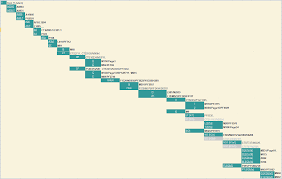In these pandemic times, I realize that I haven’t written much about my quest for DNA relatives. I have in fact submitted a third swab test through Family Tree that should provide more details on the paternal side of my family. Without getting too technical, there are three main types of DNA tests on the market: y-chromosome (or y-DNA male), mitochondrial (or mtDNA female), and autosomal (non-sex). Males have one Y chromosome and one X chromosome, while females have two X chromosomes. Y is the paternal connection and therefore my y-DNA test will follow the male Banister lineage.
Genetic scientists have found that the specific quality of y-DNA that makes it so attractive is its faithfulness in passing down its record generation after generation, without fail, without changing, from one man to the next. That means that any living male today has the same (or very similar) y-DNA as every male in his direct paternal line, back 8, 10, 12+ generations.” In other words, my y-DNA will be the same as my father, grandfather, and great grandfathers.
According to these same experts, “One of the best applications of y-DNA testing comes when trying to disentangle the relationships of various men living in close proximity with other men of the same or similar surname. Having descendants of these men test their y-DNA is like traveling back in time and conducting personal interviews of each of these men.” In my case, I’ve never met any of these Banisters, so it will be my first “conversation” with the dead. The line includes Cecil Ralph Banister (1931-2011), Arlie Adam Banister (1904-1992), Charles B. Banister (1875-1940), David Banister, Sr. (1837-1918), and Laborn Banister (1801-1885). This is as far back as we can accurately trace my ancestry, since beyond that are a confusing line of William Banisters.
Our ancestors weren’t very creative when it came to names. It was not uncommon to have multiple Williams in the same family. Nicknames like Senior, Junior, Bill, Billy, Will, Willie, and initials were used to distinguish them in life, but their records and tombstones all used the formal surname William. What was originally an endearing tribute to the father have modern day genealogists scratching their heads in confusion. To add to the uncertainty, there was an extra “n” in the spelling of some of their last names. This y-DNA test will be my contribution to help solve this mystery, along with the data of ten other Ban(n)ister relatives. y-Not?

Leave a Reply